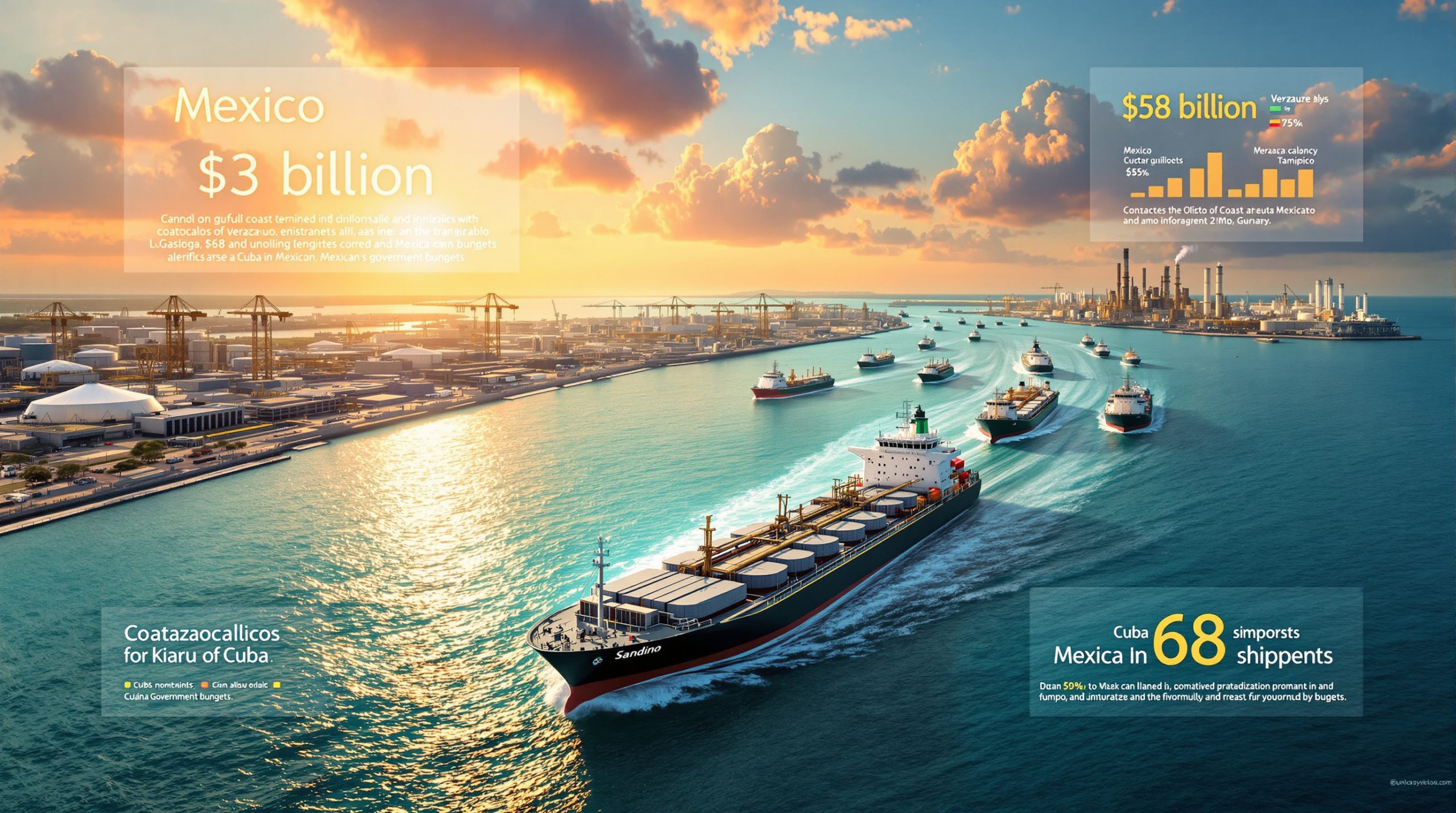What is the US-Ukraine Minerals Agreement and Why Does it Matter?
The landmark economic partnership signed between the United States and Ukraine in May 2025 represents a significant geopolitical and economic development. This agreement establishes a framework for mineral resource development while supporting Ukraine's reconstruction efforts. The partnership comes at a critical time as Ukraine possesses substantial deposits of lithium, titanium, manganese, graphite, and rare earth elements—resources essential for renewable energy technologies and defense applications.
The agreement leverages Ukraine's estimated 500,000 tonnes of lithium reserves while creating a path for economic revitalization without creating debt obligations for the Ukrainian government.
Key Components of the US-Ukraine Minerals Agreement
Reconstruction Investment Fund Structure
The agreement establishes a joint governance model with equal decision-making power between both nations, ensuring neither country can unilaterally control resource development. This balanced approach respects Ukraine's sovereignty while facilitating American investment and expertise.
During the initial 10-year reinvestment period, all profits generated through the agreement will be directed back into Ukraine's economy, creating a self-sustaining model for recovery. This approach differs significantly from other international resource agreements that often prioritize immediate returns for investor nations.
After this initial decade, there is potential for revenue sharing between partners, though the specific distribution mechanism hasn't been publicly detailed in full. However, the agreement includes comprehensive tax exemptions for fund revenues and contributions in both countries, reducing fiscal burdens that might otherwise limit investment potential.
Resource Sovereignty Protections
Ukrainian First Deputy Prime Minister Yulia Svyrydenko emphasized that "this agreement does not contain any debt obligations to the US," highlighting a key distinction from other international investment models. Ukraine maintains exclusive rights to its subsoil, territorial waters, and natural resources, with these protections anchored in accordance with UN Resolution 1803 regarding permanent sovereignty over natural resources.
State ownership of Ukrainian enterprises is preserved throughout the agreement, preventing foreign acquisition of strategic assets. Unlike many international development agreements, no debt obligations to the United States are included, protecting Ukraine from potential debt traps that have affected other resource-rich nations.
The agreement requires minimal legislative amendments for fund operation, preserving Ukraine's domestic legal framework while enabling the partnership to function effectively.
Financial Framework and Revenue Distribution
Under the agreement, 50% of future revenues from new royalties will be directed to Ukraine's reconstruction efforts. Revenue sources include newly issued licenses for critical mineral shortages, oil, and gas exploration, creating multiple potential streams of capital.
Importantly, existing projects and previously budgeted initiatives are excluded from the arrangement, ensuring current operations continue uninterrupted while new developments fall under the partnership framework. This provision protects existing stakeholders while creating opportunities for new investment.
All fund resources must be invested within Ukraine's borders, guaranteeing that capital stays within the country rather than flowing outward to foreign shareholders or parent companies.
How Will the Agreement Boost Ukraine's Economic Recovery?
The agreement comes at a crucial juncture for Ukraine's reconstruction needs, with approximately 70% of the country's transportation networks requiring post-conflict rebuilding. The partnership addresses both immediate infrastructure requirements and long-term economic development.
Strategic Investment Priorities
Natural Resource Development Projects
The agreement focuses on critical minerals extraction to capitalize on Ukraine's resource potential, particularly lithium, titanium, and rare earth elements which are in high global demand. One significant development is a $300 million Letter of Intent from the US Export-Import Bank for lithium battery facilities, demonstrating early commitment to the partnership.
Projects that align with both nations' strategic interests will receive prioritization, especially those involving critical minerals essential for renewable energy and defense technologies. This approach ensures mutual benefit while addressing global supply chain vulnerabilities.
Technology transfers facilitated by the US International Development Finance Corporation will enable Ukraine to implement advanced extraction methodologies similar to those employed in AARP's mining technology initiatives in Western Australia. These transfers will help Ukraine move beyond raw material exports toward value-added processing, significantly increasing the economic value of its mineral resources.
The partnership creates potential for modernizing Ukraine's extraction capabilities with cutting-edge technologies including AI-driven extraction tools and advanced processing methods that minimize environmental impact while maximizing yield.
Infrastructure Reconstruction Initiatives
Investment will target rebuilding essential infrastructure damaged during conflict, with particular emphasis on transportation networks critical for mineral exports. Specific projects may include Dnipro River port reconstruction to facilitate mineral shipments to European markets.
The fund will provide targeted funding for projects that support economic revival, prioritizing infrastructure that connects extraction sites to processing facilities and international markets. Many of these projects will incorporate advanced technologies in reconstruction efforts, creating infrastructure that exceeds pre-conflict capabilities rather than merely restoring what existed previously.
The development of transportation networks to support mineral extraction and export will reduce logistics costs, making Ukrainian minerals more competitive in international markets while creating jobs throughout the supply chain.
Economic Benefits Beyond Financial Investment
Technology Transfer and Innovation
The agreement provides Ukrainian companies with access to US technical expertise and advanced extraction methodologies that would otherwise be prohibitively expensive to develop domestically. This knowledge transfer represents significant value beyond direct financial investment.
There's substantial potential for developing value-added processing capabilities within Ukraine, allowing the country to export refined products rather than raw materials and capture more of the value chain. The most promising development is in lithium processing, where global demand is projected to increase by 200% by 2030 according to GlobalData forecasts.
Innovation partnerships between Ukrainian and American companies will foster knowledge exchange and joint ventures in mining technology, processing, and related industries. These collaborations will help Ukraine develop domestic expertise rather than remaining dependent on foreign technology.
The modernization opportunities for Ukraine's mining and energy sectors extend beyond extraction to include processing, refining, and manufacturing of components for renewable energy and high-tech industries.
Security Enhancement Measures
The agreement includes potential expansion of assistance to include air defense systems protecting strategic mining and processing assets from potential disruption. This security component recognizes that economic development requires stability to attract investment.
The partnership represents a strengthened strategic alliance between the nations, with economic ties complementing existing security cooperation. It sends a clear signal to Russia regarding US commitment to Ukraine's sovereignty and creates a long-term security framework to protect economic investments from potential threats.
"This partnership signals commitment to lasting peace and prosperity in Ukraine," stated US Treasury Secretary Scott Bessent during the signing ceremony, emphasizing the agreement's dual economic and security objectives.
What Makes This Agreement Strategically Significant?
Geopolitical Implications
US Strategic Positioning
American companies will receive preferential access to new Ukrainian minerals deals, giving them a competitive advantage in securing exploration, extraction, and processing contracts. This preferential access is particularly significant given that approximately 80% of US rare earth element imports currently come from China.
The agreement strengthens US influence in Eastern Europe through economic partnership, complementing existing security arrangements with a framework for long-term development. It represents a strategic diversification of critical mineral supply chains away from competitors, reducing vulnerability to supply disruptions or price manipulation.
The agreement signals the Trump administration's approach to Ukraine-Russia conflict resolution, emphasizing economic reconstruction alongside security assistance. This balanced approach acknowledges that sustainable peace requires economic opportunity.
Ukraine's Position Enhancement
The partnership reinforces Ukraine's sovereignty and territorial integrity through international economic engagement, making it more difficult for adversaries to contest Ukraine's control of its territory and resources. As political scientist Lee Ward noted, "Equity in political economy is foundational to strategic alliances," and this agreement creates equity between the partners.
Economic partnership with a global superpower provides Ukraine with leverage in peace negotiations, demonstrating international commitment to the country's future. The agreement also represents diversification of international support beyond military assistance, creating multiple channels of engagement with Western partners.
Perhaps most importantly, the agreement establishes a framework for long-term economic stability independent of conflict resolution, allowing Ukraine to begin rebuilding its economy without waiting for complete peace.
Critical Minerals Security
Supply Chain Resilience
The partnership offers potential reduction in US dependence on other sources for critical minerals, particularly China which currently dominates global supply chains for many strategic materials. For Ukraine, it creates export opportunities to Western markets seeking supply diversification.
The agreement enables development of alternative supply routes for strategic resources, leveraging Ukraine's geographic proximity to EU markets as a competitive advantage. This proximity reduces shipping costs and transit times compared to Asian suppliers.
There is significant opportunity to establish processing capabilities outside of current dominant markets, creating a more resilient global supply chain for critical minerals. These decentralized processing capabilities would reduce vulnerability to disruptions in any single region.
The partnership enhances resource security for both nations through diversified sourcing, making both economies more resilient to supply shocks or geopolitical investor strategies affecting mineral access.
Future Market Positioning
Early access to developing mineral resources in Ukraine gives both countries strategic advantage as global demand for critical minerals continues to rise. The International Energy Agency projects critical mineral demand to increase by 400-600% by 2040, making early positioning crucial.
The partnership creates potential for establishing new industry standards and practices in responsible mining and processing, potentially influencing global norms. It also facilitates creation of integrated supply chains between the partner nations, reducing transaction costs and improving efficiency.
Together, these factors create a competitive advantage in emerging critical mineral markets for both American and Ukrainian companies involved in the partnership.
Who Are the Key Figures Behind the Agreement?
Leadership and Negotiation Teams
US Representatives
Scott Bessent, US Secretary of the Treasury and key signatory of the agreement, brings significant financial expertise to the partnership. As a former hedge fund manager with $15 billion in assets under management, Bessent has extensive experience in large-scale investment structures. His involvement in Trump's 2017 tax reforms also provided relevant background for designing the tax exemptions incorporated into the agreement.
President Donald Trump provided the vision behind the partnership framework, emphasizing economic reconstruction alongside security assistance. The Trump administration's approach differs from previous policies by prioritizing direct economic partnership rather than traditional aid models.
The US Treasury Department has been tasked with finalizing the governance structure, drawing on its experience managing international financial relationships. Meanwhile, the US International Development Finance Corporation serves as the implementation partner, bringing experience from similar projects in developing markets.
Ukrainian Leadership
Yulia Svyrydenko, First Deputy Prime Minister and Ukrainian signatory, has been instrumental in preserving Ukraine's sovereignty throughout negotiations. As she noted, "Negotiations required balancing sovereignty with foreign investment," highlighting the delicate balance achieved in the final agreement.
The Ukrainian negotiation team received praise for professionalism and developing a mutually beneficial framework that protects national interests while attracting investment. Government officials responsible for implementing the minimal legislative amendments required have already begun the necessary legal work to enable the partnership.
From the initial February 2025 draft to the May 2025 signing, the negotiation process demonstrated both sides' commitment to creating a sustainable partnership rather than a short-term arrangement.
How Will Implementation Work?
Governance and Oversight
Fund Management Structure
The agreement establishes equal decision-making power between US and Ukrainian representatives, with a proposed 10-member board featuring 5 appointees from each nation. This balanced structure ensures that neither country can unilaterally control fund operations.
Transparent governance mechanisms will ensure accountability to stakeholders in both countries, with public disclosure requirements for major investments and outcomes. Regular reporting requirements will track progress against established goals and provide early warning of potential challenges.
Independent oversight will monitor project selection and implementation, helping to prevent corruption or misallocation of resources. This oversight will leverage the US International Development Finance Corporation's established risk assessment frameworks to evaluate potential investments.
Project Selection Criteria
Projects will be evaluated based on economic impact and strategic value, with quantifiable metrics established for each dimension. Critical minerals development will receive particular focus, especially lithium, titanium, and rare earth elements essential for renewable energy and defense applications.
Infrastructure projects that support extraction and transportation will be prioritized, recognizing that mineral resources require logistics networks to reach markets. Innovation initiatives that enhance Ukraine's competitive position will receive consideration, particularly those that move beyond extraction to processing and manufacturing.
The selection process will balance immediate reconstruction needs with long-term development goals, creating a portfolio of projects with varying timeframes and risk profiles.
Implementation Timeline and Milestones
Near-Term Actions
Immediate steps include finalization of fund governance structure by US Treasury and DFC, expected to be completed within three months of the signing. Establishment of project selection criteria and application processes will follow, with initial guidelines published by late 2025.
Identification of initial priority projects for funding is already underway, with preliminary assessments of high-potential mineral deposits and critical infrastructure needs. Development of monitoring and evaluation frameworks will ensure transparency and accountability as projects move forward.
Long-Term Development Phases
The implementation will follow a phased approach, with Phase 1 (2025–2027) focusing on exploration licenses and Phase 2 (2028–2030) concentrating on extraction infrastructure development. This staggered approach allows for risk management and progressive scaling of investments.
During the initial 10-year reinvestment period, all resources will focus on infrastructure and extraction capabilities. Potential revenue sharing may begin after the first decade, depending on project performance and financial outcomes.
As the partnership matures, there will be gradual transition to more complex, value-added projects including processing facilities and component manufacturing. Based on initial successes, there may be expansion of partnership scope to include additional sectors or geographic areas.
What Challenges Might the Agreement Face?
Potential Implementation Obstacles
Geopolitical Uncertainties
Ongoing conflict dynamics with Russia create significant implementation challenges, particularly for projects in or near contested areas. Approximately 40% of Ukraine's critical mineral reserves are located in the Donbas region, which continues to experience instability.
Changes in US or Ukrainian political leadership could affect commitment to the partnership, though the agreement's structure creates incentives for continuation regardless of political shifts. Regional stability concerns affecting investment security remain a primary risk factor, potentially delaying certain high-value projects.
International reactions from other major powers, particularly those currently dominating critical mineral markets, may include competitive responses or attempts to undermine the partnership.
Operational Challenges
Infrastructure limitations in conflict-affected areas present significant hurdles for early-stage projects, requiring additional investment in basic services and transportation. Technical complexities in mineral extraction, particularly for deposits that haven't been previously developed, may require specialized expertise and technology.
Environmental considerations and sustainability requirements must be integrated into project planning, potentially increasing costs but ensuring long-term viability. Coordination between multiple stakeholders across countries presents management challenges, requiring robust communication and governance systems.
Risk Mitigation Strategies
Security Frameworks
The agreement includes potential incorporation of defense systems to protect investments, drawing on models used during NATO operations in Afghanistan's mining sector. International guarantees for project security may be established, possibly involving multinational insurance or security arrangements.
Insurance mechanisms for conflict-related disruptions are being developed, allowing investors to manage risk exposure more effectively. Strategic location selection will minimize risk exposure in early phases, with projects in more stable regions receiving priority while security conditions evolve elsewhere.
Adaptive Management Approaches
Implementation will feature flexible timelines based on security conditions, allowing for acceleration or deceleration of projects as circumstances warrant. A phased investment approach will test concepts before scaling, limiting potential losses while validating assumptions.
Regular review and adjustment of priorities based on evolving conditions will ensure the partnership remains relevant and effective despite changing circumstances. Comprehensive contingency planning for various scenarios will prepare stakeholders for potential challenges, from renewed conflict to natural disasters.
"Adaptive management is essential when operating in post-conflict environments," notes a GlobalData analyst. "Political shifts in the 2024 US elections could alter priorities, requiring flexible implementation frameworks."
FAQs About the US-Ukraine Minerals Agreement
What specific minerals are covered under the agreement?
The agreement focuses on critical minerals, along with oil and gas exploration. While specific minerals aren't extensively detailed in the announcement, Ukraine possesses significant deposits of lithium, titanium, manganese, graphite, and rare earth elements that are essential for renewable energy technologies and defense applications. According to USGS 2024 data, Ukraine's lithium reserves alone are estimated at 500,000 tonnes, representing a significant opportunity for development.
Does this agreement create debt obligations for Ukraine?
No, Ukrainian First Deputy Prime Minister Yulia Svyrydenko explicitly stated that the agreement does not contain any debt obligations to the United States. This is particularly significant given Ukraine's existing sovereign debt, which stood at approximately 22% of GDP according to Ukraine's 2024 sovereign debt report. The agreement maintains Ukraine's sovereignty over its resources and state ownership of enterprises while creating a framework for investment without debt accumulation.
How will profits be distributed between the countries?
During the initial ten years, all profits will be reinvested entirely into Ukraine's economy, focusing on infrastructure development and expanded extraction capabilities. After this period, profits may be shared among the partners, though the exact distribution mechanism hasn't been publicly detailed in full. The agreement specifies that 50% of future revenues from new royalties will be directed to Ukraine, creating a guaranteed minimum return regardless of profit-sharing arrangements.
How does this agreement impact existing mining operations?
The agreement specifically excludes revenues from existing projects or those already budgeted from the arrangement. This suggests that current mining operations will continue under their existing frameworks, with the agreement focusing on new development opportunities. This provision protects existing stakeholders while creating space for new investment without disrupting established operations.
What role will American companies play in Ukrainian mineral development?
American companies will receive preferential access to new Ukrainian minerals deals, giving them advantages in securing contracts for exploration, extraction, and potentially processing of critical minerals in Ukraine. This preferential access includes potential partnerships with Ukrainian firms, technology transfers, and investment opportunities throughout the mineral supply chain. The exact mechanisms for this preferential access will be established through implementing regulations in both countries.
Further Exploration:
Readers interested in learning more about international mineral agreements and their economic implications can explore related educational content published by organizations such as the International Institute for Sustainable Development, which offers perspectives on sustainable mining practices and resource governance frameworks. The agreement's focus on reinvestment rather than immediate profit extraction represents a potentially significant evolution in international resource development models that could reshape the commodity super-cycle impact and influence [
Want to Profit from the Next Major Mineral Discovery?
As critical minerals take centre stage in global economic strategies, Discovery Alert's proprietary Discovery IQ model instantly notifies investors of significant ASX mineral discoveries, transforming complex data into actionable insights. Visit Discovery Alert's dedicated discoveries page to understand why major mineral discoveries can lead to exceptional market returns, and begin your 30-day free trial today to position yourself ahead of the market.




